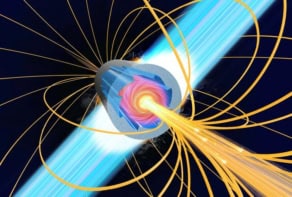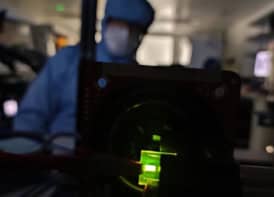Laser physicists in the UK have reduced the threshold power needed for stimulated Raman scattering by two orders of magnitude. The Bath University team says that the breakthrough - which exploits a low-loss, hollow-core photonic-crystal fibre filled with hydrogen - marks the beginning of a new era in gas-based nonlinear optics (F Benabid et al. 2002 Science 298 399).
In stimulated Raman scattering incoming photons interact with gas molecules to produce photons with both longer wavelengths (so-called Stokes radiation) and shorter wavelengths (so-called anti-Stokes radiation). Team member Fetah Benabid says that the Bath group has set new low-threshold records for both the Stokes and anti-Stokes processes: 800±200 nJ for Stokes conversion and 3.4±0.7 µJ for anti-Stokes conversion. Benabid says that the dramatic reduction is due to the increased interaction length between the pump laser and the hydrogen gas used as the Raman active medium.
“In the case of free-space, the interaction length was limited to the only a few millimetres before the laser beam diffracted,” he explains. “People have used capillary fibers before but the losses were so high that pieces no longer than one or two centimetres could be used. All these limitations vanish if you use hollow-core photonic-crystal fibre. Light is confined in a hollow core and with losses of less than 1 dB per metre, it is contained over much longer lengths.”
The researchers fabricate their photonic-crystal fibre using a capillary-stacking technique. Seven missing capillaries result in a 15 µm hollow core, which is then filled with hydrogen. Pulses with a duration of 6 ns from a Nd:YAG laser operating at 532 nm are then coupled into the fibre’s core, which contains hydrogen under pressure. The Stokes and anti-Stokes photons have wavelengths of 683 nm and 435.2 nm respectively.
According to Benabid, the low-loss fiber also has a very broad transmission window. “The fiber transmits over more than 700 nm through the visible and IR,” he says. “This allows effective guidance of the pump and the different Raman components.”
The team is now trying to develop fibre with much lower losses. Benabid says this would allow a low-power continuous-wave laser, such as a diode laser, to act as the pump source. Fibers filled with hydrogen, nitrogen or methane could yield sources at previously unattainable wavelengths in infrared, visible and ultraviolet regions, he adds.


